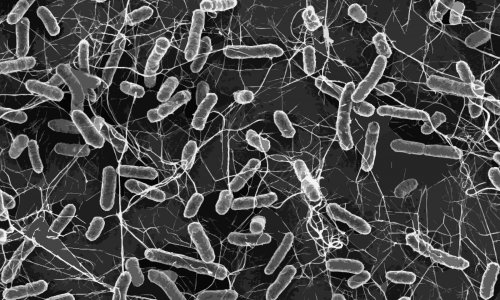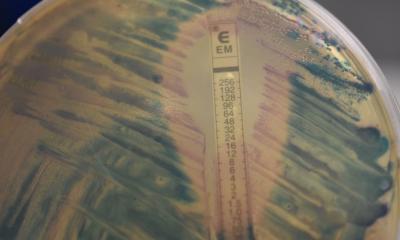mcr-1 gene
Antibiotic resistance mechanism continues to spread
Researchers presented findings on the prevalence of the mcr-1 gene, a transferable genetic mechanism of antimicrobial-resistance to colistin - the last resort antibiotic in a number of circumstances. At a session dedicated to late-breaking abstracts on colistin resistance, researchers presented evidence on the prevalence of the gene in bacteria (including Enterobacteriaceae such as Escherichia coli,Salmonella or Klebsiella). Scientists also presented evaluations of treatment and management options, as well as new diagnostic methods and assays to help identify mcr-1. The late-breaking data was released at ECCMID 2016.

The mcr-1 gene is particularly significant as it can be carried by plasmids, small DNA molecules, which can be transferred between single-celled organisms, such as bacteria, through so-called horizontal gene transfer. These genes can then be transferred sideways to other strains or species, not just vertically down to the offspring by replication. Horizontal gene transfer is the primary reason for antibiotic resistance.
The mechanism, first discovered in an E. coli strain from a pig in China in November 2015, has over the past months been identified in bacterial samples across the world. The increased prevalence of plasmid-mediated resistance is causing major concern among infectious disease specialists, because it threatens to reduce options to treat infections and is creating new resistant bacterial strains.
A Malaysian study evaluated mcr-1 detection in Enterobacteriaceae. The researchers support the evidence that the detection of the mcr-1 gene in colistin-resistant Enterobacteriaceae may be useful for rapid detection in clinical isolates. Rapid detection is needed for better patient management and to promptly implement effective infection control measures. They also suggest that the detection methods should include other molecular mechanisms that may contribute to the resistance of colistin in CR-KP.
Prof. Winfried Kern, Programme Director of ECCMID comments: “The mcr-1 gene has recently taken centre stage in the on-going fight against antibiotic resistance as we are concerned that resistance this colistin resistance mechanism may be transferred between different bacterial species. The antibiotic colistin is in some cases already the only treatment option clinicians have left. Today’s research gives some indication of its prevalence, its spread and its genetic diversity, adding further data on its role and transference. Understanding the spread of mcr-1 and the underlying resistance mechanism will allow us to develop more effective diagnostics, treatments and stewardship programmes to better manage infections caused by multi-resistant pathogens.”
Source: ECCMID
13.04.2016











